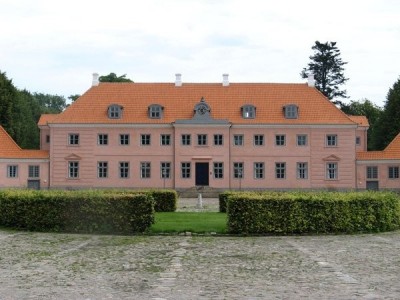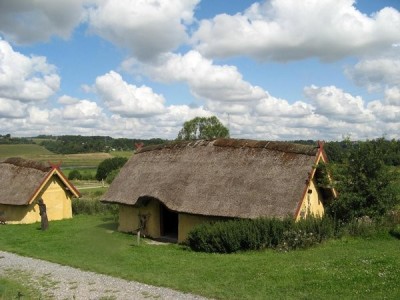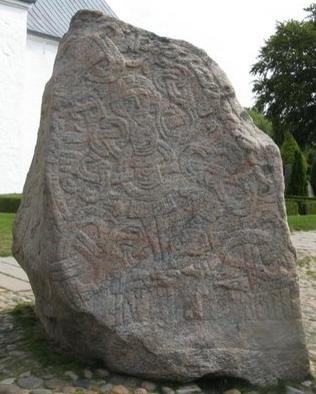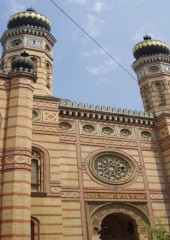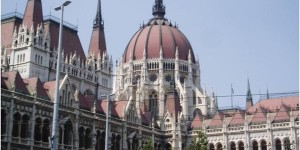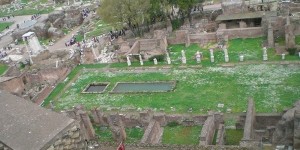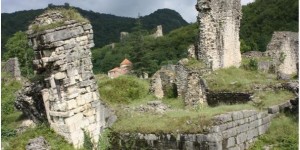For the past few years the Department of Anthropology, Archaeology and Linguistics at Aarhus University in Denmark has run an English language Summer School on Viking related themes. This year the course was entitled Viking Age Scandinavia: Transformation and Expansion, and ran for 10 days between the 3rd and 12th of August, with a rest day on the Sunday. As a final year student with an interest in Early Medieval Societies I decided to attend the school, and I thought it might be useful for me to give some of my impressions of the course for the benefit of other York students who may be interested in attending the program in future years.
The Venue
Arhus is a city on the East Jutland coast of Denmark, and is, I believe, the second largest city in Denmark after Copenhagen, however by British standards it is still quite small with a population of some 300, 000 people. Much of the university is situated within the city; however the archaeology department is located in a pleasant coastal wooded area some kilometers outside the city itself at Moesgård. This is a historic manor house which in addition to the archaeology department is also the location of a museum, conservation labs and some reconstructed Viking buildings. The museum is well worth a visit, and has displays covering prehistoric through to the Viking period, of particular note is the Graubolle man display, which although not Viking may be familiar to those who have studied bog bodies.
The manor house has several residential rooms, normally used to house visiting lecturers, however as the British contingent this year was quite small (myself and three Cambridge students), we were lucky enough to be allocated these rooms. The Scandinavian students were located nearby in slightly more basic, although still reasonably comfortable, hostel style accommodation.
The Course
The course itself could be divided into two main components: a series of lectures on various topics relevant to the Viking age; and two days of coach excursions to Viking sites on the Jutland peninsula, together with an afternoon devoted to a tour of Moesgård and Aarhus museums, and a guided walk around Viking Aarhus.
The taught portion of the course consisted of a series of lectures on a variety of topics given by tutors from Aarhus and elsewhere. Some of these were one-off talks given by individuals on their own specialist topics, others were given by a core group of teachers, principally Else Roesdahl, James Graham-Campbell, Anne Pedersen and Unn Pedersen; some of whom will probably be familiar to those of you interested in Viking studies. The subject matter covered was very wide-ranging, with both archeological and more textual evidence discussed; a fairly random sample of individual lecture titles include: Towns, Trade and Exchange; The Great Ship Burials; The Saga Legacy; The Age of Harald Bluetooth; Old Norse religion; and Ships and Seafaring. In addition to standard lectures there also were a number of 'hands on' sessions with various Viking artefacts, weapons, and ship parts. Most of the material discovered was primarily Scandinavian, with fairly limited coverage of other parts of the Viking world. For example Britain was covered in a single lecture; this however was useful in giving a wider perspective for those of us used to a more British centered approach to the Vikings. The lecture schedule was quite heavy with 4 or 5 one hour plus lectures per day, this can be quite a challenge to those of us used to only a few lectures per week, and it can be quite tiring to maintain the high level of concentration required for several days.
One of the highlights of the Summer School for me were the field trips to major Viking sites in Jutland, these included Fyrkat Viking Fortress; Jelling, Lindholm Høje; and Ribe. As part of the excursions we also visited several reconstructed Viking structures such as farmhouses, and churches; this was particularly interesting as it provided a contrast to the more urban reconstructions of the Jorvik Viking Centre in York. One slight disappointment was that there was no visit to the Viking Ship Museum at Roskilde, unfortunately this is located on the island of Zealand and travel to the museum would take most of the day, however a visit may be considered for future years.
Before starting the course I was contacted by email and provided with a link to a large amount of downloadable pdf documents (papers, offprints, etc), as background reading. I would recommend that anyone attending the course should at least make some inroads into this reading before starting, while this material isn't absolutely necessary to understanding the lectures, it is often very useful.
Unfortunately, at least from my point of view, the course is part of the assessment for many of the Scandinavian students, and consequently finishes with a 4 hour exam, which is taken by all attendees including those who don't count it towards our own degrees. In the end taking the exam was not too great a hardship and one could be quite relaxed, and regard a pass as a useful addition to the CV.
Social Events
As well as the teaching, there were a number of formal and informal social events, including an 'icebreaker' wine reception, a barbeque party, and a meal in Aarhus. These were enjoyable events with an opportunity to meet the tutors and Scandinavian students, most of whose English was slightly better than mine!
Logistics and Costs
The cheapest and quickest way of getting to Aarhus is probably by flying, there is a Ryanair flight from Stanstead for £49. It is worth knowing that Aarhus airport is about 40km from the city, although there is an airport bus to the city for about £10, from there it is necessary to catch a further bus to Moesgård. The accommodation is self catering, although it is usually possible to purchase lunch from a canteen, or cafeteria associated with the museum. It is worth remembering that most prices in Denmark are somewhat greater than in Britain and you should allow a minimum of £15 per day for food and drink. Alcohol is particularly expensive, for example a half litre of beer in a town centre bar costs about £5
Other (approximate) costs include £170 for course fees, £80 excursions, and £12 per night accommodation. Of course the costs are subject to fluctuations in the exchange rate, and may increase in later years. The course fees need to be paid for in advance via bank transfer, other costs can be paid for in cash to the course administration assistant. It is worth mentioning here that Maria our course administrator, went out of her way to be helpful, meeting us on arrival at Moesgård, and generally providing help and assistance in a slightly unfamiliar environment.
Conclusion
I have to say that this course, while quite tiring, was thoroughly enjoyable, and I felt that I learned a great deal about the wider Viking world. Consequently I would have no hesitation in recommending the course to anyone interested in extending their knowledge of the Viking period. Please remember, however, that although the actual cost of the course and accommodation is very reasonable, you do need to budget for transport and living costs, which may substantially increase your expenditure.
Finally, if anyone is thinking of attending the course next year please feel free to contact me, I would be happy to expand on the information here, and to give further advice. My email address is ks535 [at] york.ac.uk.


